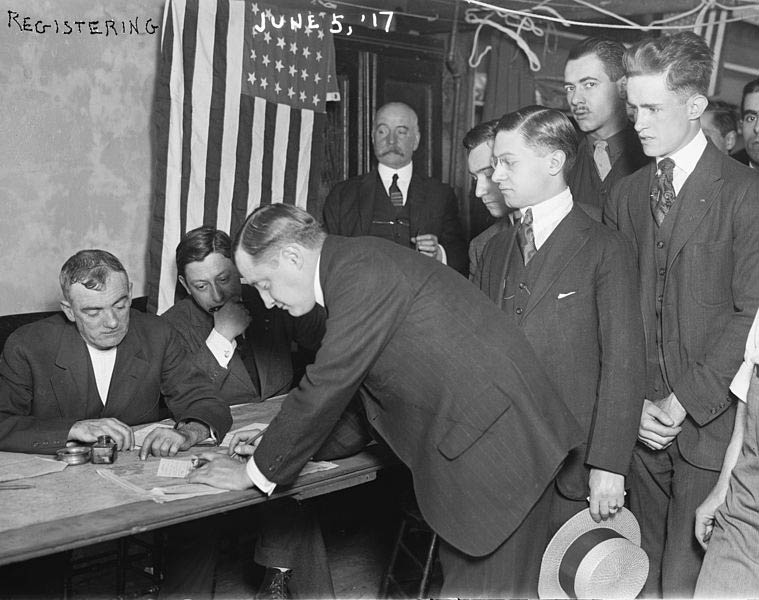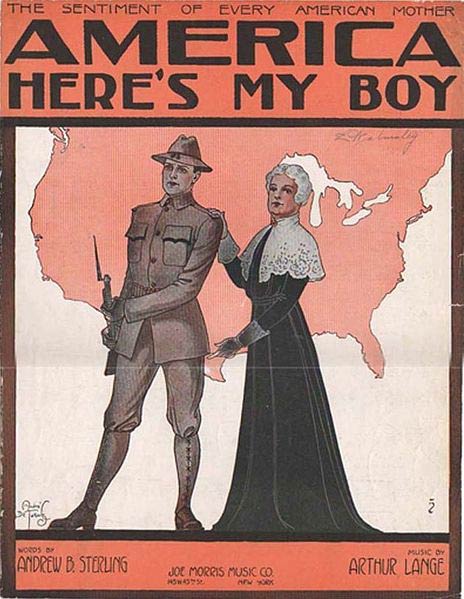 The first military draft in the United States since the ending of the Civil War in 1865 was brought back in the form of the Selective Service Act of 1917. That was the year the United States decided to enter the First World War, which had been raging in Europe since 1914.
The first military draft in the United States since the ending of the Civil War in 1865 was brought back in the form of the Selective Service Act of 1917. That was the year the United States decided to enter the First World War, which had been raging in Europe since 1914.
The Great War
The First World War, or World War I, began in Europe when the Archduke Franz Ferdinand of Austria and his wife Sophie were assassinated on June 28, 1914. Although this was the spark that ignited the war, Europe had been a tinderbox teetering on the brink of all-out war for at least a half-century.
Ferdinand was killed by a Serbian national. This provided a pretext for Austria-Hungary to launch an invasion of its neighbor, Serbia. The war quickly spread as other European nations took sides. Within months, the entire European continent was engulfed in “The Great War.”
The primary players in the war were Germany and their Austria-Hungary allies. Opposing them was an alliance of Great Britain, France, and Russia. Many other nations were caught up in this far-reaching and complex conflict.
America Drawn into War
 At first glance, there seemed little reason for the United States, across the Atlantic and practically a world away, to get involved in what the average American citizen viewed as a “European problem.”
At first glance, there seemed little reason for the United States, across the Atlantic and practically a world away, to get involved in what the average American citizen viewed as a “European problem.”
However, the powers-that-be in Washington, D.C. eventually were pulled into the war for complex geo-political reasons, although two events are cited as the prime motivators. The first was the sinking of the British ocean liner, the Lusitania, by a German U-Boat. The second was intelligence which showed that Germany had encouraged Mexico to join the war in exchange for granting Mexico American territory as a spoil of war.
A Tiny American Army
Congress declared war on Germany on April 6, 1917. However, there was a problem. At the time, the United States had not maintained a draft since the Civil War. In the run-up to the war, the American army was tiny, consisting of less than 100,000 men. President Woodrow Wilson knew that he would need at least one million men to make a significant contribution to the Great War.
Thus, the Selective Service Act of 1917 was implemented. This required that all men between the ages of 21 to 30 to register for the draft. This was later amended to require men between the ages of 21 and 45 to register.
An Unpopular Draft
Although the United States had a policy of inscription before, the Selective Service Act of 1917 was widely unpopular by a public who saw no direct benefit to America getting involved in a European problem. The constitutionality of the 1917 Act was challenged, but the Supreme Court upheld the measure in the Selective Draft Law Cases of 1918.
The result of the Selective Service Act of 1917 was that 2.8 million men were conscripted into the various branches of the U.S. Military. Another two million men volunteered – many of the latter reasoning they would be drafted anyway. According to historians, some 350,000 men “dodged the draft.” A total fighting force of 4.3 million men was raised.
End of War, End of Draft
World War I ended on Nov. 11, 1918. The length of the American participation was short, but deadly. More than 116,000 Americans were killed and an additional 204,000 were wounded. In all, more than 10 million were killed among those nations that fought in the war.
At the end of the war, the Selective Service Act of 1917 was not officially repealed, but all of its activities were quickly curtailed. All offices were closed, all personnel ceased activity, and the draft essentially came to an end.